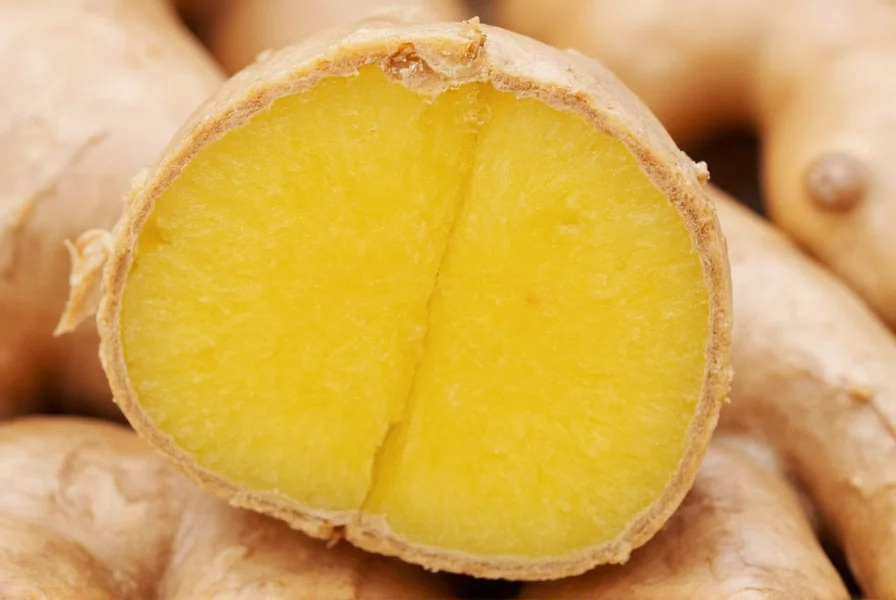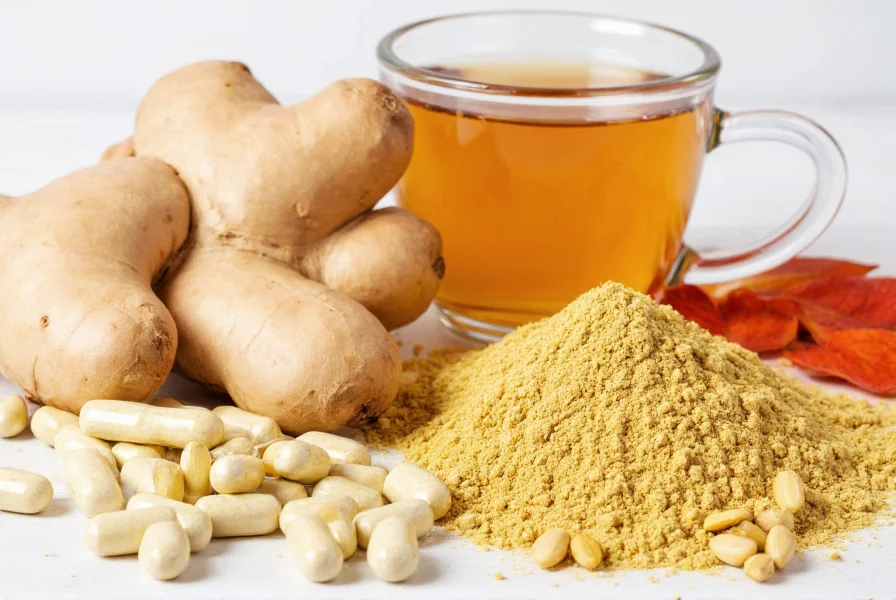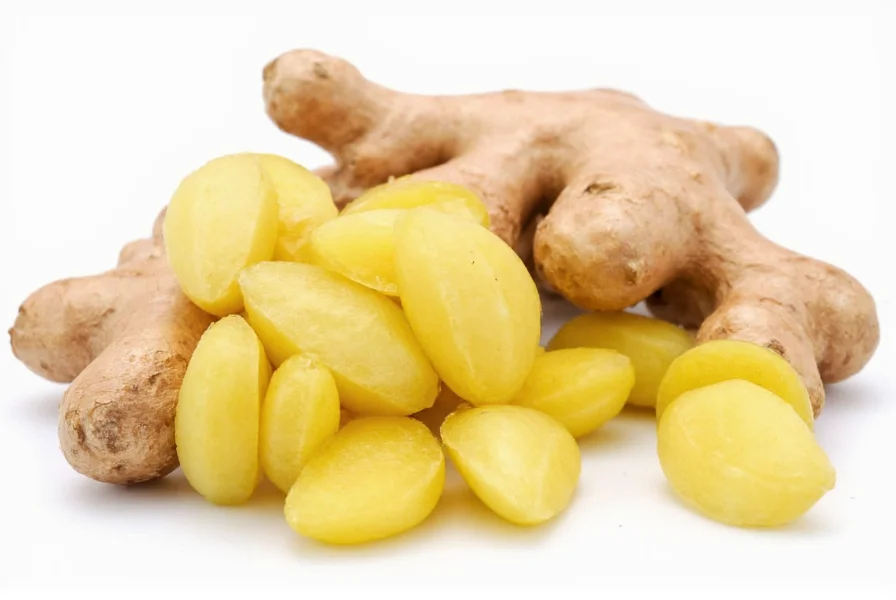For those seeking natural approaches to managing inflammation, ginger offers a scientifically supported option. This ancient remedy has transitioned from traditional medicine to evidence-based practice, with modern research validating its anti-inflammatory mechanisms. Understanding how ginger works, the optimal forms for consumption, and realistic expectations can help you make informed decisions about incorporating this powerful root into your wellness routine.
How Ginger Fights Inflammation: The Science Explained
Ginger's anti-inflammatory effects stem primarily from its bioactive compounds, especially gingerols and shogaols. These compounds work through multiple biological pathways:
- Inhibition of COX and LOX enzymes - Similar to how NSAIDs work, but through natural mechanisms
- Suppression of NF-kB pathway - A key regulator of inflammation in the body
- Reduction of pro-inflammatory cytokines - Including TNF-α, IL-1β, and IL-6
- Antioxidant activity - Neutralizing free radicals that contribute to inflammatory processes
Unlike pharmaceutical anti-inflammatories that typically target just one pathway, ginger works through multiple mechanisms simultaneously, potentially offering broader protection with fewer side effects.

Clinical Evidence: What Research Says About Ginger and Inflammation
Multiple clinical studies have investigated ginger's anti-inflammatory effects across various conditions. A comprehensive review published in Nutrients analyzed 120 studies on ginger's therapeutic properties, confirming its significant anti-inflammatory potential.
| Study | Participants | Dosage | Key Findings |
|---|---|---|---|
| Osteoarthritis Trial (2021) | 120 adults with knee OA | 1g ginger extract daily for 12 weeks | 32% reduction in inflammatory markers; significant pain improvement |
| Rheumatoid Arthritis Study (2020) | 60 RA patients | 500mg ginger powder 3x daily for 12 weeks | 27% decrease in CRP levels; reduced joint swelling |
| Exercise-Induced Muscle Soreness (2019) | 40 athletes | 2g raw ginger daily for 5 days | 25% less muscle pain; faster recovery markers |
These findings align with ginger's traditional use in Ayurvedic and Traditional Chinese Medicine for inflammatory conditions. The evidence suggests ginger works best when used consistently over time rather than as an immediate solution.
Optimal Forms and Dosage for Inflammation Relief
Not all ginger preparations deliver the same anti-inflammatory benefits. Research indicates:
- Fresh ginger - Contains higher levels of gingerols; 1-2 grams daily (about 1/2 to 1 inch of root) provides therapeutic benefits
- Dried ginger powder - More concentrated; effective dose is 250-500 mg taken 2-3 times daily
- Standardized extracts - Look for products containing 5% gingerols; 250 mg taken twice daily shows consistent results in studies
- Ginger tea - Requires longer steeping (10+ minutes) to extract sufficient compounds; 2-3 cups daily
For does ginger reduce inflammation naturally, consistency matters more than single high doses. Incorporating ginger into your daily routine for 4-8 weeks typically yields the most noticeable results, as inflammation markers gradually decrease.
Ginger Compared to Other Anti-Inflammatory Options
When considering ginger vs turmeric for inflammation, both offer valuable benefits but work through slightly different mechanisms. Turmeric's curcumin targets different inflammatory pathways, making the two potentially complementary.
Compared to NSAIDs like ibuprofen, ginger provides milder but broader anti-inflammatory effects with significantly fewer gastrointestinal side effects. While pharmaceuticals may offer faster pain relief, ginger addresses underlying inflammation with a better safety profile for long-term use.
For those asking how much ginger should I take for inflammation, research suggests starting with lower doses (500mg daily) and gradually increasing to 1-2 grams if needed, monitoring for any digestive discomfort.

Practical Ways to Incorporate Ginger for Inflammation
Finding the best form of ginger for inflammation depends on your preferences and lifestyle:
- Morning routine - Add freshly grated ginger to warm lemon water
- Cooking - Use in stir-fries, soups, and curries (cooking doesn't significantly reduce active compounds)
- Smoothies - Blend 1/2 inch fresh ginger with anti-inflammatory foods like berries and spinach
- Tea - Steep sliced ginger in hot water for 10+ minutes for maximum compound extraction
- Supplements - Choose standardized extracts with clear gingerol content labeling
For those specifically researching ginger supplement dosage for inflammation, look for products providing 250-500 mg of ginger extract standardized to 5% gingerols, taken twice daily with meals to minimize potential stomach upset.
Limitations and Important Considerations
While ginger shows promise for inflammation management, it's not a cure-all. Important considerations include:
- Ginger works gradually - expect 4-8 weeks for noticeable effects on chronic inflammation
- It may interact with blood thinners and diabetes medications
- Some people experience mild digestive upset at higher doses
- Not recommended for those with gallstones without medical supervision
- Should complement, not replace, conventional medical treatment for serious inflammatory conditions
The scientific evidence on ginger and inflammation supports its use as part of a comprehensive approach that includes diet, exercise, and stress management. Always consult with a healthcare provider before using ginger therapeutically, especially if you have underlying health conditions or take medications.
Frequently Asked Questions
How long does it take for ginger to reduce inflammation?
Research shows it typically takes 4-8 weeks of consistent daily use to notice significant reductions in inflammation markers. Some people report feeling benefits within 2 weeks, but maximum effects usually require at least a month of regular consumption at therapeutic doses (1-2 grams of raw ginger or 250-500 mg of standardized extract daily).
What's the most effective form of ginger for inflammation?
Both fresh ginger and standardized extracts show strong evidence for reducing inflammation. Fresh ginger (1-2 grams daily) contains higher levels of gingerols, while standardized extracts (250-500 mg twice daily with 5% gingerol content) offer consistent dosing. Dried ginger powder requires higher doses (1-2 grams daily) as some compounds degrade during drying. For most people seeking reliable results, standardized extracts provide the most consistent anti-inflammatory benefits.
Can ginger replace anti-inflammatory medications?
Ginger should not replace prescribed anti-inflammatory medications without consulting your healthcare provider. While research shows ginger has significant anti-inflammatory properties, it works more gradually and provides milder effects than pharmaceutical options. For chronic inflammatory conditions like rheumatoid arthritis, ginger may complement but not replace conventional treatment. Always discuss any changes to your treatment plan with a medical professional.
Are there any side effects of using ginger for inflammation?
Most people tolerate ginger well at recommended doses for inflammation (1-2 grams daily). Some may experience mild digestive upset, heartburn, or mouth irritation, especially with higher doses. Ginger may interact with blood thinners and diabetes medications, so consult your doctor if taking these. Those with gallstones should use ginger cautiously. Unlike NSAIDs, ginger doesn't typically cause stomach ulcers or kidney issues, making it safer for long-term use.
How does ginger compare to turmeric for reducing inflammation?
Both ginger and turmeric have strong anti-inflammatory properties but work through different mechanisms. Ginger primarily inhibits COX-2 and 5-LOX enzymes while reducing pro-inflammatory cytokines. Turmeric's curcumin mainly targets the NF-kB pathway. Research suggests they may be complementary, with some studies showing enhanced effects when used together. Ginger tends to work faster for acute inflammation like muscle soreness, while turmeric may have stronger effects on chronic inflammatory conditions. Both are valuable components of an anti-inflammatory diet.











 浙公网安备
33010002000092号
浙公网安备
33010002000092号 浙B2-20120091-4
浙B2-20120091-4